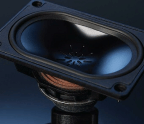MUSIC IN THE ROUND

THIS ISSUE: In Kal’s closing column, he consigns a contemporary control contraption to a more consecrated calling.
This is the 100th and—surprise!—final edition of Music in the Round. MitR began in mid-2003, shortly after SACD and DVD-A discs made high-quality multichannel music convenient and widely available. At the time, I was convinced that multichannel reproduction was superior to stereo because it was able to reproduce the full sound of the performance—not just the performers. Stereophile’s founder, J. Gordon Holt, had promoted this idea many times, but the appearance of the new media finally brought it to a wider audience. I recall that, when then-Editor John Atkinson and I floated the idea of a column on multichannel audio, we had to promise our publisher that it would not deal with anything having to do with video or home theater, lest it impinge on the territory of sister publications. We readily agreed: In keeping with Stereophile’s mission, the column has always been about optimizing the music-listening experience.
Back then, we were so grateful for every new music release that we gobbled them up, sometimes regardless of whether the content exactly suited our taste. We sought hardware to play the discs, even if integration with the rest of our components was clumsy. We foresaw a future in which multichannel would supplant stereo, just as stereo succeeded mono, simply because it was technically and aesthetically superior. Multichannel recordings would become the “lingua franca” of the music industry and hardware to play it would be the default, especially for the serious audiophile.
Despite all that, even today, nothing more than casual references to multichannel music playback appear in the pages of audio magazines. Even in Stereophile, Music in the Round is a niche: too easily passed over and possibly beyond the notice of many readers. This contrasts with the interest and attention paid to it all over the Internet and in my email inbox. General awareness requires general exposure.
To this end, will now integrate multichannel products and recordings. Jim Austin decided to make this change during a long discussion on the eve of his elevation to the position of Editor. Our conversation acknowledges multichannel as a valid and important facet of high-quality music reproduction, both scientifically and aesthetically, even as it remains a small niche.
You’re reading a preview, subscribe to read more.
Start your free 30 days



